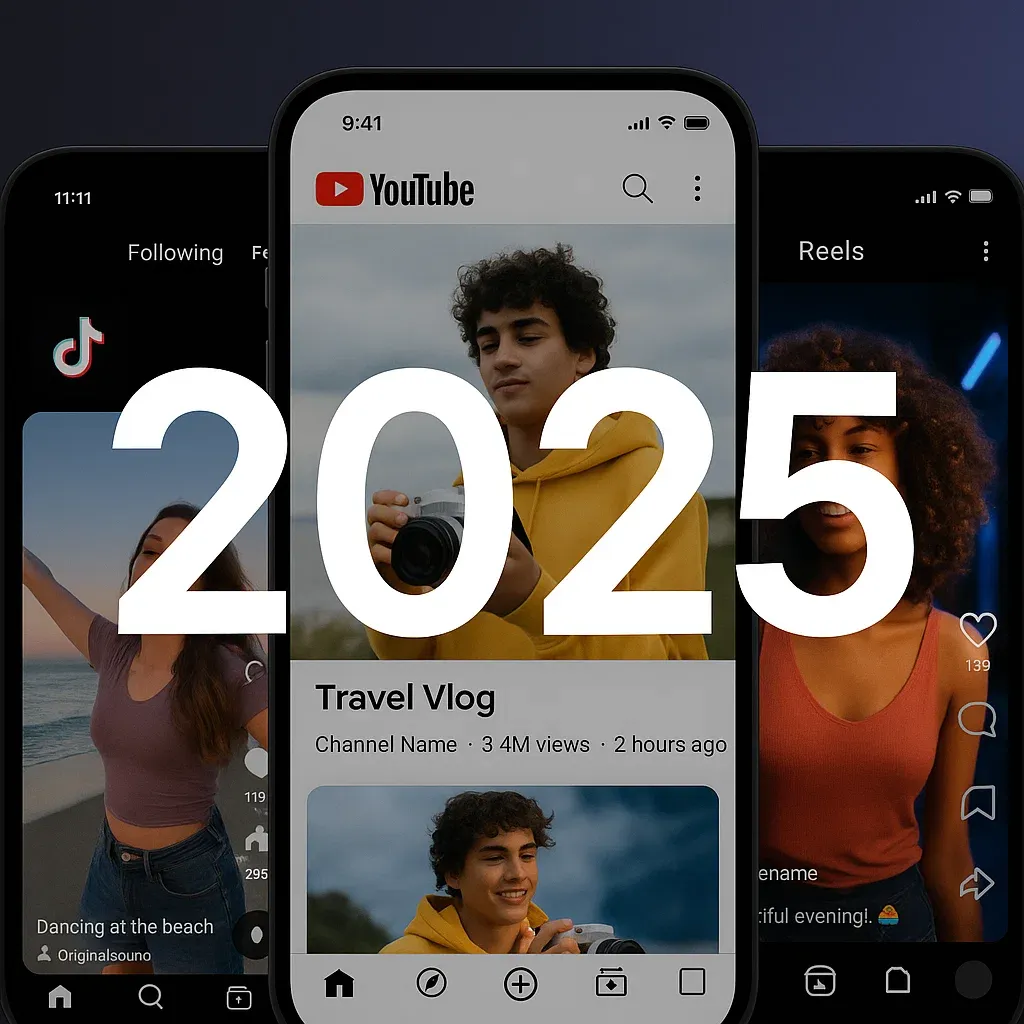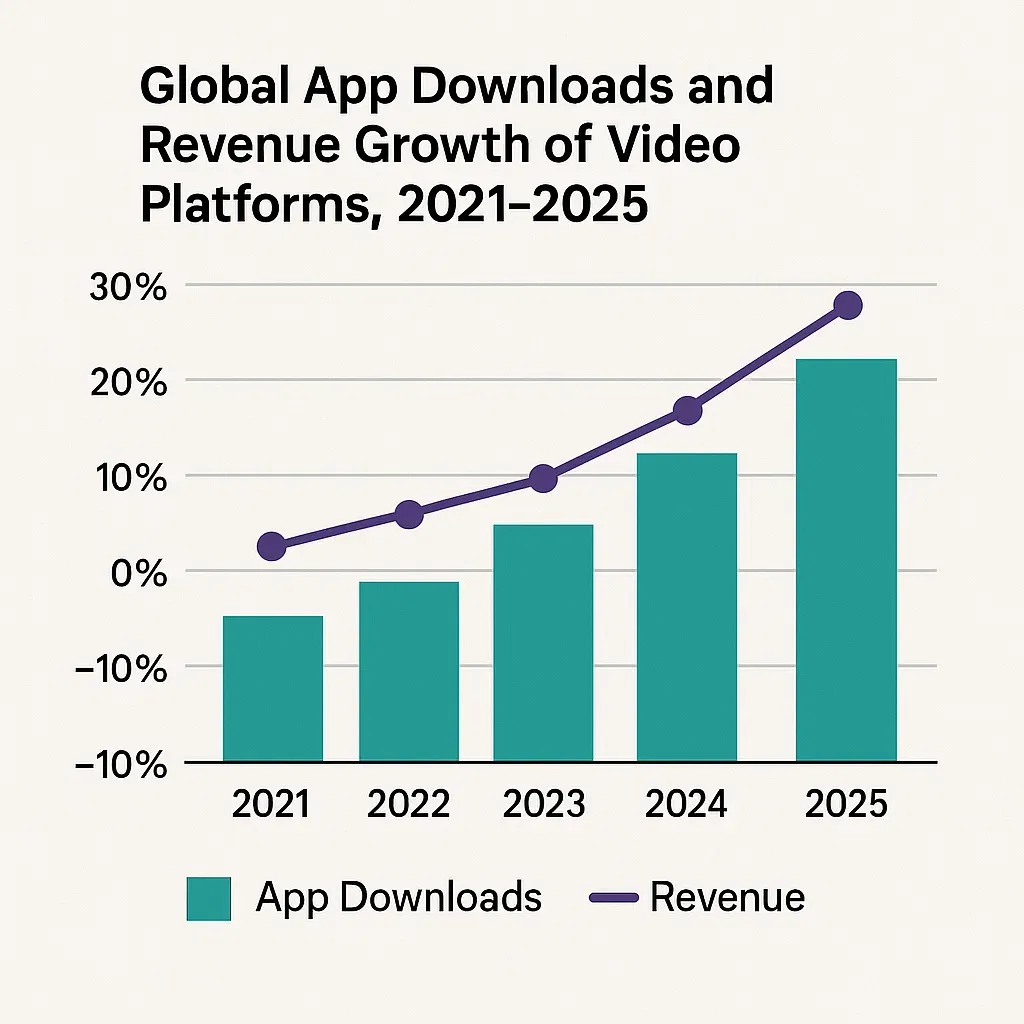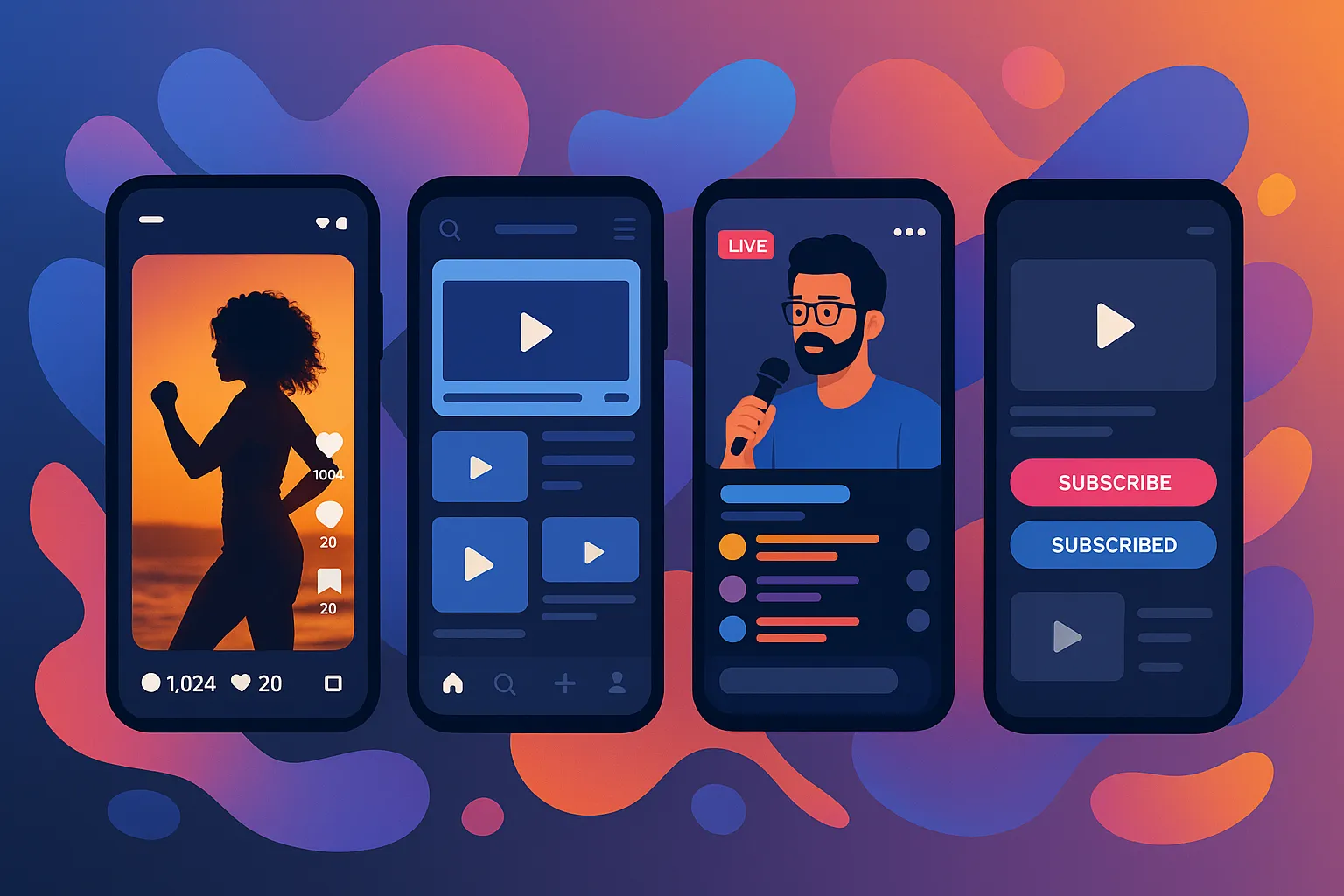The video sharing industry has never been more dynamic, and 2025 is shaping up to be a pivotal year for innovation, creator empowerment, and monetization. With the skyrocketing popularity of short-form content, live streaming, and creator-first platforms, there’s never been a better time for founders and digital agencies to tap into this space.
Launching a video sharing app isn’t just trendy—it’s a lucrative business decision. Consumer demand is at an all-time high, investment in media tech is surging, and successful platforms are proving just how powerful user-generated content can be.
In this blog, we’ll explore why video sharing apps are a high-potential opportunity in 2025, dive into the most profitable app ideas worth launching, and break down the cost and tips for building your own solution using clone app development with Miracuves.

Read more: How to Start a Video Sharing Platform Business
Why Video Sharing Apps Are a Hot Opportunity in 2025
According to Statista, global video traffic will make up more than 82% of all internet traffic in 2025. Consumers are spending an average of 100 minutes per day watching video content online. Meanwhile, platforms like TikTok, YouTube Shorts, and Instagram Reels continue to draw billions of daily views. The writing is on the wall: video content is king—and the kingdom is only growing.
CB Insights reported that venture funding in the media and entertainment tech sector crossed $8.5 billion in 2024 alone. Investors are hungry for creator-driven platforms, live interaction tools, and niche-focused video communities. With Web3, AI personalization, and edge computing pushing performance to new heights, there’s a strong technical backbone enabling new entrants to compete meaningfully.
Success stories like Rumble (a YouTube alternative), Twitch (long-form live streaming), and even micro-niche apps like Clapper show there’s still room for innovation. At the same time, gaps remain—particularly for apps catering to regional content creators, under-monetized niches, and hyper-personalized communities.

Top Profitable Video Sharing App Ideas to Launch in 2025
1. Short-Form Vertical Video App (Like TikTok)
A fast-paced video platform centered on short, vertically shot content designed for quick entertainment and viral discovery. Users can easily scroll, like, and share while creators benefit from built-in editing tools and algorithmic reach. Perfect for theme-based apps in fitness, fashion, or regional comedy niches.
Monetization Strategy: In-app ads, branded content, creator tipping, sponsored challenges.
Why It Works in 2025: TikTok’s growth shows no signs of slowing, but regional and themed clones (e.g., fitness-only or comedy-only) have massive potential.
2. Creator Subscription Platform (Like Patreon + Video)
This model empowers creators to monetize exclusive video content directly through fan subscriptions. Fans pay for behind-the-scenes content, tutorials, or personal messages. The platform fosters loyal communities and offers creators more control over their income.
Monetization Strategy: Monthly subscriptions, pay-per-view videos, gated content tiers.
Why It Works in 2025: Creator economy tools are exploding, and more influencers want independence from YouTube’s algorithms.
3. Live Video Auction App
A real-time streaming platform where sellers host live auctions and viewers place bids while engaging through chat. Ideal for collectibles, handmade goods, or beauty products, this model adds entertainment to commerce. It creates urgency and drives impulse purchases.
Monetization Strategy: Commission on sales, priority listings, platform ads.
Why It Works in 2025: Social commerce is booming, and live selling is particularly effective for lifestyle, collectibles, and beauty niches.
4. Educational Video Sharing Platform
A structured platform where users can explore video content tailored to learning—like tutorials, how-tos, and mini-courses. Content is categorized by skill level and topic, providing a personalized learning journey. Great for creators in tech, business, and arts education.
Monetization Strategy: Course subscriptions, video rentals, affiliate programs.
Why It Works in 2025: The eLearning market is projected to hit $375B by 2026. There’s strong demand for niche-focused learning tools.
5. Video Podcast Sharing App
This platform focuses on long-form discussions in video format, offering features like series playlists, episode bookmarks, and viewer interaction. Podcasters can publish ad-free content, monetize with sponsors, or gate premium episodes.
Monetization Strategy: Ad slots, premium subscriptions, sponsorship placement.
Why It Works in 2025: With rising podcast consumption, video-enabled discussions have higher retention and monetization opportunities.
6. Anonymous or Discreet Video Journal App
A secure, private video platform for emotional expression and journaling. Users can record and tag their feelings without public visibility. Perfect for mental health tracking, therapy support, or self-reflection. Optionally, entries can be shared anonymously with wellness communities.
Monetization Strategy: Premium features, wellness brand partnerships, ad-free upgrades.
Why It Works in 2025: Wellness and mental health apps are thriving; combining it with private video journaling can be a compelling, unique offering.
7. Niche Community Video App (e.g., Gamers, Foodies)
This app builds tight-knit video communities focused on a specific passion—like gaming walkthroughs, food recipes, or travel vlogs. Members interact, collaborate, and share content that speaks to their shared identity. Highly brandable and sponsorship-friendly.
Monetization Strategy: Brand sponsorships, affiliate links, exclusive events.
Why It Works in 2025: Hyper-focused communities drive better engagement and attract advertisers who want targeted reach.
What Makes an App Profitable in the Video Sharing Niche?
Profitable video sharing apps in 2025 all share some critical traits:
- Recurring Revenue Models: Through subscriptions, in-app purchases, or platform fees.
- High Retention: Personalized feeds, community features, and content loops keep users coming back.
- Low Operational Overhead: Cloud infrastructure and clone app frameworks reduce ongoing costs.
- User Acquisition Efficiency: Viral content formats and influencer onboarding can dramatically reduce CAC (customer acquisition cost).
Clone app development gives founders a unique edge here. Instead of spending months and six-figure budgets building from scratch, white-label clone solutions—like those from Miracuves—offer rapid launch capability, proven UX models, and full customizability.
Cost to Build a Video Sharing App in 2025
Building a video sharing app in 2025 can range significantly depending on your goals:
- Basic MVP: $15,000 – $35,000
- Mid-Tier App with Monetization: $40,000 – $80,000
- Advanced App with Live Streaming, AI Filters, Analytics: $100,000 – $200,000+
Launch Your Video Streaming Platform in Just 3–6 Days — Go Live with Miracuves from $2,500 to $3,000!
Key cost factors include:
- Platform (iOS, Android, Web)
- Backend infrastructure (CDNs, cloud storage, live streaming protocols)
- UI/UX sophistication
- Security and scalability requirements
Choosing a clone app solution from Miracuves can cut your launch time by 60% and reduce costs by up to 50%. With robust video engines, payment integrations, and modular add-ons pre-built, it’s the smarter, leaner way to get to market.
Read more: Develop a YouTube-Like Video Platform: Cost Breakdown
Tips for Founders to Launch a Successful Video Sharing App
- Start with an MVP: Don’t build everything on Day 1. Focus on the core video sharing feature and test audience interest fast.
- Invest in UI/UX: First impressions matter. Your app must be visually modern and functionally intuitive.
- Validate Before Scaling: Use beta communities, influencer testers, or pre-launch waitlists to gauge traction.
- Scalable Architecture: From day one, your backend should be ready to handle growth. Consider CDN integration, AI-driven moderation, and modular features.
- Market Like a Creator: Use content marketing, partnerships with influencers, and UGC campaigns to scale faster post-launch.
Read more: How to Market a Video Sharing and Streaming Platform Successfully After Launch
Conclusion
Video sharing apps are the digital gold mines of 2025. With rising consumer engagement, creator-driven economies, and scalable monetization options, the space is bursting with potential for entrepreneurs who can act quickly and strategically. Whether you’re targeting a global user base or a niche community, there’s a model that fits your vision.
Ready to launch your own video sharing app? Miracuves offers scalable, white-label clone solutions to help you go live faster and smarter—no need to reinvent the wheel. Get in touch today and start building your success story.
At Miracuves, we help innovators launch high-performance app clones that are fast, scalable, and monetization-ready. Ready to turn your idea into reality? Let’s build together.
FAQs
Q:1 How much does it cost to build a video sharing app?
The cost to build a video sharing app with Miracuves ranges from $2,500 to $3,000, with a complete Go-Live setup in just 3–6 days.
Q:2 What features should a successful video sharing app include?
Essential features include video uploads, algorithmic feed, social sharing, monetization tools, analytics, and user moderation.
Q:3 Is it better to build from scratch or use a clone solution?
Using a white-label clone solution significantly reduces costs and time-to-market while offering scalability.
Q:4 Can I customize a video sharing app clone from Miracuves?
Yes, Miracuves clone apps are fully customizable—design, feature sets, integrations, and monetization tools.
Q:5 Which video sharing app niche is most profitable in 2025?
Short-form video platforms and creator subscription models are among the most profitable due to their monetization diversity and user stickiness.
Q:6. How long does it take to launch a clone-based video sharing app?
With Miracuves, a functional MVP can go live in as little as 4–6 weeks.
Related Articles:








